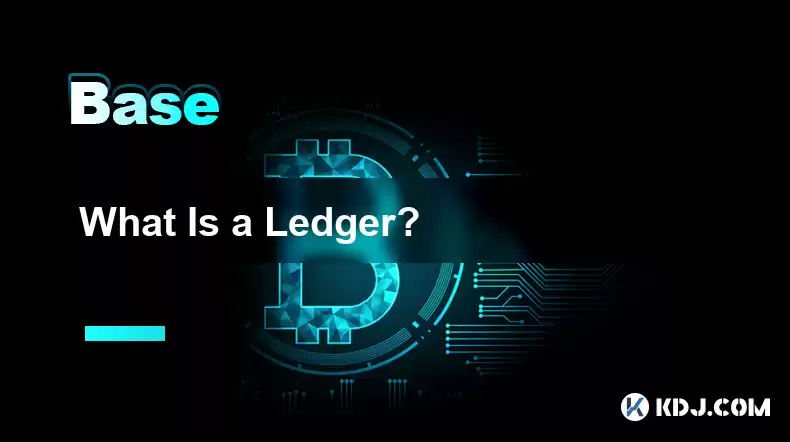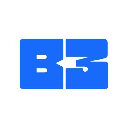-
 Bitcoin
Bitcoin $115000
0.12% -
 Ethereum
Ethereum $3701
4.50% -
 XRP
XRP $3.081
2.99% -
 Tether USDt
Tether USDt $0.0000
-0.01% -
 BNB
BNB $767.9
1.45% -
 Solana
Solana $169.5
3.13% -
 USDC
USDC $0.9999
0.01% -
 Dogecoin
Dogecoin $0.2106
4.30% -
 TRON
TRON $0.3334
1.62% -
 Cardano
Cardano $0.7564
2.54% -
 Stellar
Stellar $0.4165
0.76% -
 Hyperliquid
Hyperliquid $38.75
0.25% -
 Sui
Sui $3.593
3.00% -
 Chainlink
Chainlink $17.08
3.59% -
 Bitcoin Cash
Bitcoin Cash $573.6
4.35% -
 Hedera
Hedera $0.2508
-0.84% -
 Avalanche
Avalanche $23.07
6.46% -
 Ethena USDe
Ethena USDe $1.001
-0.02% -
 Litecoin
Litecoin $120.8
8.17% -
 UNUS SED LEO
UNUS SED LEO $8.943
-0.32% -
 Toncoin
Toncoin $3.400
-5.60% -
 Shiba Inu
Shiba Inu $0.00001255
1.54% -
 Uniswap
Uniswap $9.908
6.32% -
 Polkadot
Polkadot $3.718
2.10% -
 Monero
Monero $303.0
-0.74% -
 Dai
Dai $0.9999
-0.02% -
 Bitget Token
Bitget Token $4.392
0.91% -
 Cronos
Cronos $0.1403
6.31% -
 Pepe
Pepe $0.00001076
1.13% -
 Aave
Aave $267.2
1.80%
What Is a Ledger?
Public blockchain ledgers, epitomized by Bitcoin and Ethereum, transcend geographic boundaries and grant accessibility to all internet enthusiasts, setting a benchmark for transparent and universally verifiable transaction records.
Dec 17, 2024 at 07:34 am

Key Points:
- Definition of a Blockchain Ledger
- Types of Blockchain Ledgers: Public, Private, and Consortium
- Features and Characteristics of Blockchain Ledgers
- Benefits of Using Blockchain Ledgers
- Applications of Blockchain Ledgers in Various Industries
What is a Ledger?
A ledger is a digital or physical record that chronologically tracks and records financial transactions. It serves as the foundation for double-entry accounting, where every transaction involves a debit to one account and a credit to another. Ledgers are indispensable tools for businesses, accountants, and auditors to maintain accurate and reliable financial records.
Types of Blockchain Ledgers
Blockchain ledgers are a type of distributed ledger technology (DLT) that offers enhanced security, transparency, and immutability compared to traditional ledgers. There are three main types of blockchain ledgers:
1. Public Blockchain Ledgers:
- Accessible to any user with an internet connection
- Maintained by a decentralized network of computers
- Transactions are transparent and viewable by anyone
- Examples include Bitcoin and Ethereum
2. Private Blockchain Ledgers:
- Limited access to authorized users only
- Controlled by a single entity or consortium of entities
- Transactions are kept confidential within the network
- Examples include Hyperledger Fabric and Corda
3. Consortium Blockchain Ledgers:
- Hybrid approach between public and private blockchains
- Governed by a group of pre-approved organizations or entities
- Offers greater privacy and control than public blockchains
- Examples include R3 Corda and Hyperledger Fabric
Features and Characteristics of Blockchain Ledgers
- Decentralization: Blockchain ledgers are not stored in a central location but distributed across a network of computers, making them resistant to hacking and unauthorized alterations.
- Immutability: Once a transaction is recorded on a blockchain ledger, it is extremely difficult or impossible to change or delete, ensuring the integrity and authenticity of the data.
- Transparency: Public blockchain ledgers provide open and verifiable records of all transactions, promoting trust and accountability.
- Security: Blockchain ledgers leverage advanced encryption algorithms and consensus mechanisms to safeguard data and prevent unauthorized access.
Benefits of Using Blockchain Ledgers
- Enhanced Security: The distributed and immutable nature of blockchain ledgers significantly reduces transaction fraud and data tampering.
- Increased Transparency: Public blockchain ledgers offer greater visibility into transactions, fostering transparency and trust among stakeholders.
- Improved Efficiency: Blockchain ledgers automate and streamline processes by removing intermediaries and manual reconciliation steps, enhancing operational efficiency.
- Reduced Costs: Blockchain technology eliminates the need for intermediaries and costly paperwork, leading to significant cost savings.
Applications of Blockchain Ledgers in Various Industries
Blockchain ledgers have found applications in a wide range of industries, including:
- Finance: Digital currency transactions, trade settlement, remittance systems
- Supply Chain Management: Tracking the movement of goods, ensuring product authenticity, improving efficiency
- Healthcare: Secure storage of medical records, facilitating data exchange, improving patient privacy
- Government: Digital voting systems, land registry, identity management
- Voting Systems: Secure and transparent voting mechanisms to enhance trust and accountability
FAQs
1. What is the difference between a ledger and a blockchain?
A ledger is a chronological record of financial transactions, while a blockchain is a distributed ledger technology that stores and manages data in a decentralized and immutable manner.
2. How secure are blockchain ledgers?
Blockchain ledgers are highly secure due to their distributed nature, encryption algorithms, and consensus mechanisms.
3. What industries are using blockchain ledgers?
Blockchain ledgers are being utilized in various industries, including finance, supply chain management, healthcare, government, and voting systems.
4. What are the limitations of blockchain ledgers?
Current limitations of blockchain ledgers include scalability issues, potential privacy concerns, and regulatory uncertainties.
5. What are the benefits of using blockchain ledgers?
Blockchain ledgers offer enhanced security, increased transparency, improved efficiency, and reduced costs compared to traditional ledgers.
Disclaimer:info@kdj.com
The information provided is not trading advice. kdj.com does not assume any responsibility for any investments made based on the information provided in this article. Cryptocurrencies are highly volatile and it is highly recommended that you invest with caution after thorough research!
If you believe that the content used on this website infringes your copyright, please contact us immediately (info@kdj.com) and we will delete it promptly.
- Velo Universe, DEX, and DeFi Security: Navigating the Future of Decentralized Trading
- 2025-08-05 09:25:13
- Bitget Wallet Revolutionizes Solana with Gas-Free Transactions: A New Era for DeFi
- 2025-08-05 09:25:13
- Ozak AI, Crypto Boom, and ROI Potential: Is This the Next Big Thing?
- 2025-08-05 09:25:24
- Solana's ETF Hopes & the All-Time High Chase: Is SOL Set to Soar?
- 2025-08-05 09:25:24
- Coinbase's Brian Armstrong and the Art of Focused Work: A Deep Dive
- 2025-08-05 09:25:30
- Uniswap Price Prediction: Bullish Reversal on the Horizon?
- 2025-08-05 09:25:30
Related knowledge

What is the difference between CeFi and DeFi?
Jul 22,2025 at 12:28am
Understanding CeFi and DeFiIn the world of cryptocurrency, CeFi (Centralized Finance) and DeFi (Decentralized Finance) represent two distinct financia...

How to qualify for potential crypto airdrops?
Jul 23,2025 at 06:49am
Understanding What Crypto Airdrops AreCrypto airdrops refer to the distribution of free tokens or coins to a large number of wallet addresses, often u...

What is a crypto "airdrop farmer"?
Jul 24,2025 at 10:22pm
Understanding the Role of a Crypto 'Airdrop Farmer'A crypto 'airdrop farmer' refers to an individual who actively participates in cryptocurrency airdr...

What is the difference between a sidechain and a Layer 2?
Jul 20,2025 at 11:35pm
Understanding the Concept of SidechainsA sidechain is a separate blockchain that runs parallel to the main blockchain, typically the mainnet of a cryp...

What is the Inter-Blockchain Communication Protocol (IBC)?
Jul 19,2025 at 10:43am
Understanding the Inter-Blockchain Communication Protocol (IBC)The Inter-Blockchain Communication Protocol (IBC) is a cross-chain communication protoc...

How does sharding improve scalability?
Jul 20,2025 at 01:21am
Understanding Sharding in BlockchainSharding is a database partitioning technique that is increasingly being adopted in blockchain technology to enhan...

What is the difference between CeFi and DeFi?
Jul 22,2025 at 12:28am
Understanding CeFi and DeFiIn the world of cryptocurrency, CeFi (Centralized Finance) and DeFi (Decentralized Finance) represent two distinct financia...

How to qualify for potential crypto airdrops?
Jul 23,2025 at 06:49am
Understanding What Crypto Airdrops AreCrypto airdrops refer to the distribution of free tokens or coins to a large number of wallet addresses, often u...

What is a crypto "airdrop farmer"?
Jul 24,2025 at 10:22pm
Understanding the Role of a Crypto 'Airdrop Farmer'A crypto 'airdrop farmer' refers to an individual who actively participates in cryptocurrency airdr...

What is the difference between a sidechain and a Layer 2?
Jul 20,2025 at 11:35pm
Understanding the Concept of SidechainsA sidechain is a separate blockchain that runs parallel to the main blockchain, typically the mainnet of a cryp...

What is the Inter-Blockchain Communication Protocol (IBC)?
Jul 19,2025 at 10:43am
Understanding the Inter-Blockchain Communication Protocol (IBC)The Inter-Blockchain Communication Protocol (IBC) is a cross-chain communication protoc...

How does sharding improve scalability?
Jul 20,2025 at 01:21am
Understanding Sharding in BlockchainSharding is a database partitioning technique that is increasingly being adopted in blockchain technology to enhan...
See all articles

























































































